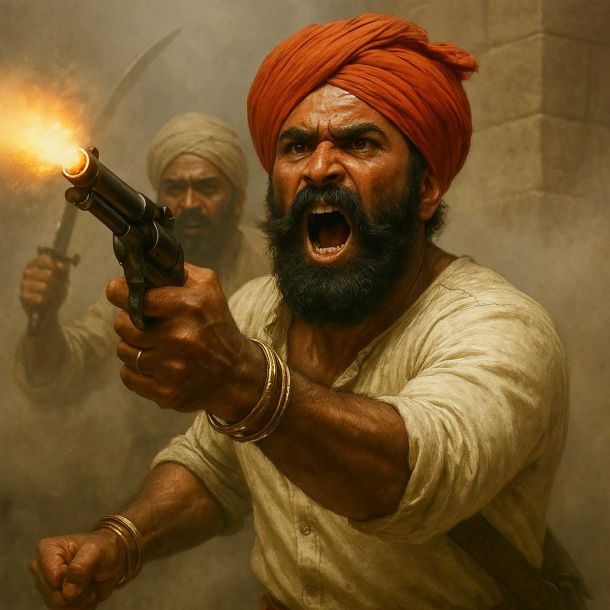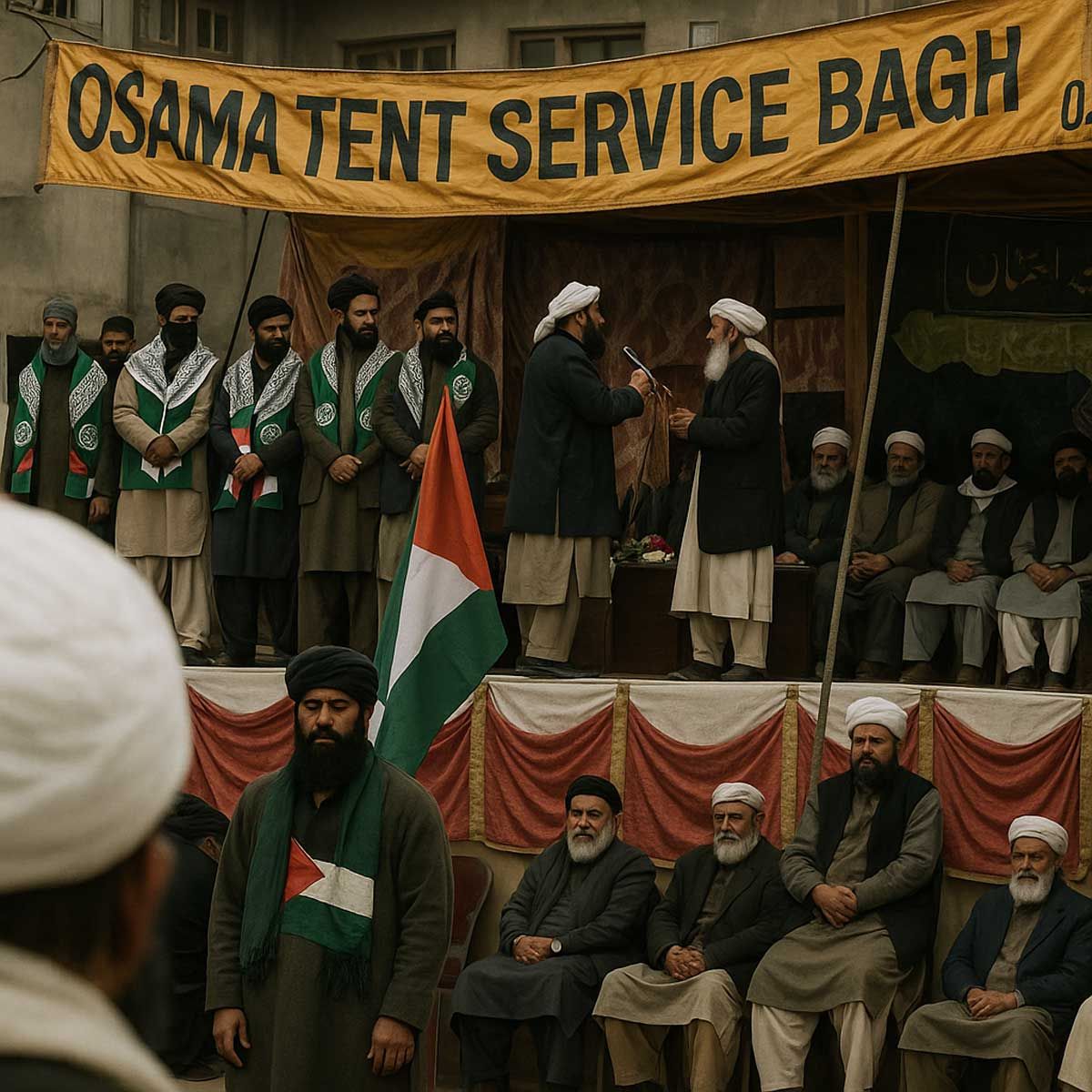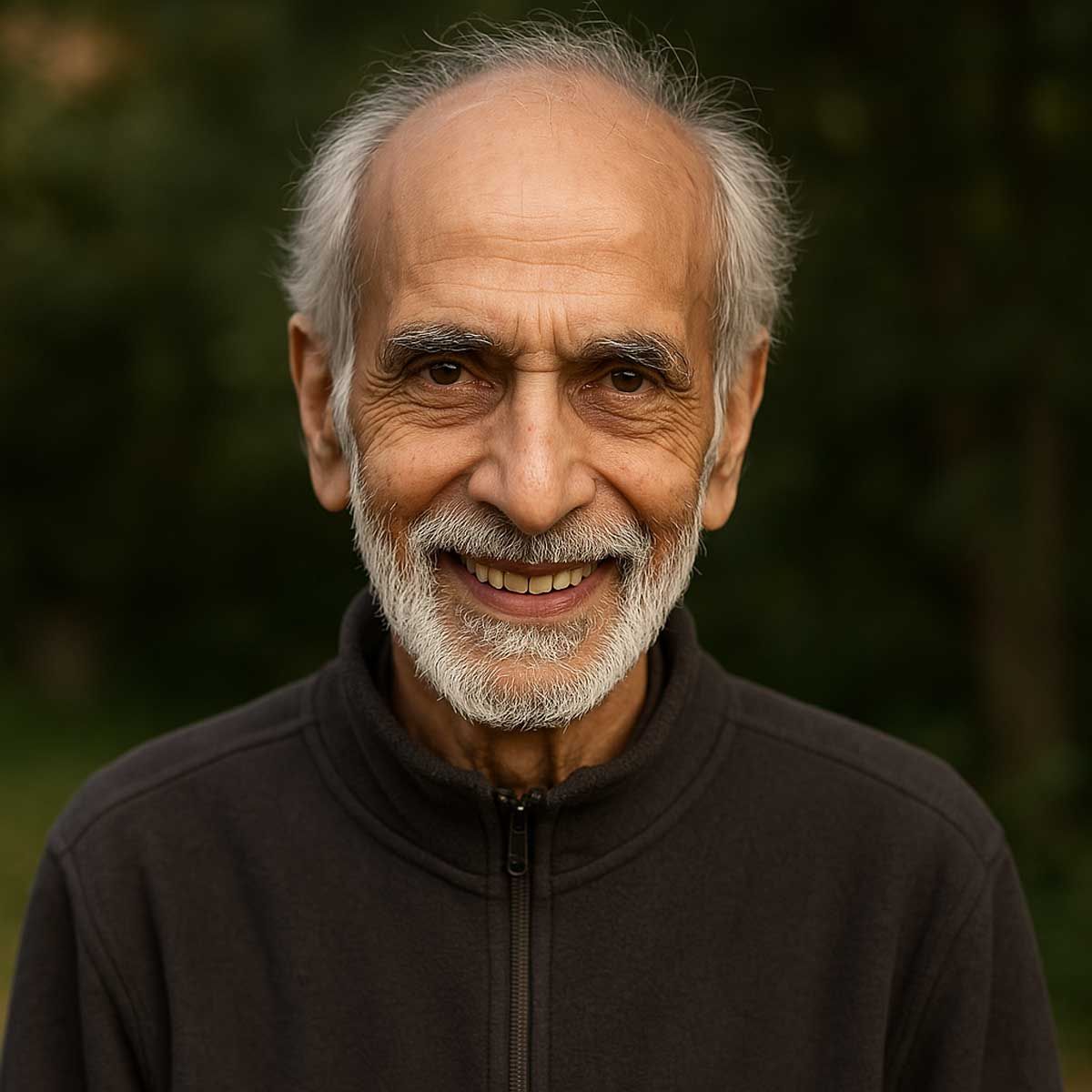Sanatan Articles
Satyaagrah
Written on
Satyaagrah
Written on
Satyaagrah
Written on
Satyaagrah
Written on
Satyaagrah
Written on
JOIN SATYAAGRAH SOCIAL MEDIA
"An Imperial Story of Conspiracy, Loot and Treachery": Maharaja Ranjit Sing's son Duleep Singh, last king of Sikh empire converted to Christianity, lost 'Kohinoor' to Queen and buried in UK with Christian rites despite the fact that he returned to Sikhism

The Sikh Empire had grown into an independent state of conspicuous wealth and power. Its army, tutored by Prussian, French, American, and Spanish generals, had become the most formidable fighting machine outside British India.
Maharaja Ranjit Singh had spent his energy consolidating his empire when he was not expanding it. After Ranjit Singh’s death, the British wanted an excuse for takeover and the Sikhs themselves provided it. Lord Ellenborough, the Governor-General of India predicted, “The break-up of Punjab will probably begin with murder”. How true his prediction proved to be. The Sikh Empire disintegrated within a decade after the death of the “Lion of Punjab”.
The army, no longer disciplined to the same extent as it was in the hands of Maharaja Ranjit Singh, and unfortunately ill-served too by its generals, met its waterloo in the first Anglo-Sikh war and to take revenge for its humiliation plunged into second Anglo-Sikh war not long after. The result as we know was the end of the Sikh empire so assiduously built by the great Maharaja Ranjit Singh.
At the time of Maharaja Ranjit Singh’s death, Duleep was not even a year old. Following his demise, Duleep Singh lived a quiet life with his mother Maharani Jind Kaur Aulakh at Jammu for a few years.
During that period, the Sikh empire that was established by Maharaja Ranjit Singh was ruled by Maharaja Kharak Singh, who was followed by Maharaja Nau Nihal Singh and Maharaja Sher Singh. After Maharaja Sher Singh was assassinated in 1841, Duleep Singh and his mother were recalled to Lahore in 1843. He was proclaimed the next King of the Sikh empire on September 16, 1843, at the tender age of five, and his mother ruled the kingdom on his behalf for a while.
It was the young Maharaja Dalip Singh, then barely 11 years old, who had to suffer the indignity of presiding even of his faith (he was converted to Christianity), he was packed off to England on a small pension to vegetate for the rest of his life. A tragic end coming so soon to a promising story weaved by Maharaja Ranjit Singh.
|
The Anglo-Sikh war of 1845
From 1843 to 1845, the Sikh army grew steadily. The foreign officials in the army were dismissed from their posts. At one point, there were over 70,000 soldiers in Sikh Army. On December 13, 1845, the British declared war against the Sikh empire and defeated the Sikh army. Though Duleep Singh was retained as the figurehead Maharaja or a nominal ruler, the Council of Regency replaced Maharani Jind Kaur. She was later imprisoned and exiled.
It was a tough period for Duleep Singh as he was a young boy without any parental figure around. In 1849, the Sikh empire lost the second Anglo-Sikh War, and Punjab was annexed to the British Empire on March 29. Duleep Singh had to not only surrender the Empire to the British but was also put into the care of Dr. John Logan, a Scottish surgeon in British India.
Dr. Logan had started his career as an assistant surgeon in the East India Company in 1832, and during his initial years, he was appointed to the Bengal establishment. In 1839, the East India Company bestowed him with two essential duties. First was the guardianship of Maharaja Duleep Singh, who was still a child, and the second was the ‘protection’ of the Kohinoor diamond. The Kohinoor diamond is one of the largest cut diamonds in the world and Maharaja Ranjit Singh came to possess it in 1813.
In December 1849, he was shifted from Lahore to Fatehgarh. Duleep Singh lived under strict restrictions and was not allowed to meet any Indians. Only a few servants who were trusted by the British officials were allowed to meet Duleep Singh that too, in private.
In the lack of a parental figure, it is believed that Duleep Singh formed a bond with Dr. Logan, who exposed him to Christian texts. He was culturally detached from his Sikh roots. According to Peter Bance, author of ‘Sovereign, Squire, and Rebel: Maharajah Duleep Singh and the Heirs of the Lost Kingdom’, a book that traces the life of Maharaja Duleep Singh, the young King was not allowed to meet any Indians, and he was surrounded by the children of British officers. There were two best friends of Duleep Singh during that period. Both of them were English Anglican missionaries. Bible was placed in his hand, and slowly he started to build interest in Christianity.
Thus, Dr. Logan introduced Maharaja Duleep Singh to Christianity and later persuaded him to convert.
|
Duleep Singh converted to Christianity
Rani Jindan, his mother, was imprisoned in Fort Chunar from where she escaped to Nepal.
In 1853, the time came when he converted to Christianity. Bhajan Lal, who was himself a Christian convert, advised him to convert to Christianity, for which formal approval was taken from the Governor-General Lord Dalhousie. Bhajan Lal was a local Brahmin who converted to Christianity. He was used to exposing Duleep to Christian texts. Lal often recited Bible phrases to Duleep Singh so that the young Maharaja build interest in Christianity. Duleep was not 15 when he was converted; thus, his conversion was considered a controversial topic.
|
Life of Duleep Singh during exile in the United Kingdom
In late 1854, he was shifted to England and was introduced to the Royal family at Windsor Palace and Queen Victoria felt infatuated with his youth and beauty. The Maharajah had come to Windsor on several occasions and the Queen got his portraits made by the celebrated court painter of Frankfurt, Franz Winterhalter in 1855. He made friends with the Prince of Wales and enjoyed the company of princesses.
Queen Victoria was supposedly in awe when she looked at him for the first time. Duleep Singh, who became a good friend of the Queen, lived in multiple hotels and homes during his stay in London. During that period, he also stayed with the Royal Family at Osborne on the invite of the Queen.
It was during one such Winterhalter sitting that the Queen persuaded the Maharajah to gift her the Kohi-Noor diamond, the mountain of light. The Queen showered her affection, generosity, and sympathy for the young Maharajah which was not liked by Lord Dalhousie. Duleep Singh was not allowed public school or University education but Prince Albert appointed tutors to teach him science, music and German and he became well versed in all. In 1863, he left London and settled down at Elveden estate in Suffolk.
In 1855, he returned to England, and at that time, Duleep Singh was liberally treated and provided an annual pension of 50,000 pounds in England. He purchased a large estate of 16,000 acres at Elveden in Suffolk and settled down as a country gentleman. There was a condition that he would remain obedient to the British Government if he wanted to receive the pension. Castle Menzies in Perthshire, Scotland, was leased for his stay.
He remained under the supervision of Logans till the age of 19, after which he demanded to be in charge of his household, which was granted by the British Government. During the 1860s, he left Castle Menzies and shifted to Grandtully Castle.
After a short span of time, Duleep Singh started to miss India and expressed his desire to go back. However, the East India Company Board was not in the mood to let the Maharaja go back to India. He was sent on a tour of Europe with John Logan and Lady Logan.
Duleep Singh was married twice. He had seven children from his first marriage to Bamba Muller and two children from his second marriage to Ada Douglas Wetherill.
Reuniting with mother
When Duleep was 18 years old, he wrote a letter to his mother, who was living in Kathmandu at that time. In his letter, he expressed his desire that she should join him in Great Britain. The letter was intercepted by the British Authorities, and it could never reach his mother. Later, he tried again to contact her via an Indian named Pundit Nehamiah Goreh. However, the contact was intercepted again, and he was not allowed contact his mother again.
This was the time Duleep had enough and decided to go himself. By that time, Maharani was virtually blind and in a frail state. The British Government came to the conclusion that she was no longer a threat and did not stop Duleep from meeting her. Peter Bance, in an interview, narrated what happened when Duleep met her mother.
Notably, as he had embraced Christianity, he had cut his hair. Upon meeting his mother, he bowed down in front of her to take her blessings. Her blind mother raised her hands and touched his head with affection, only to get the shock that he no longer had long hair, which is one of the five Ks of Sikhism. She questioned him about what had happened to his hair, and he told her the whole story.
From that moment, his mother started telling him the actual history of the Sikh empire and how his father raised one of the most prosperous empires in the country. She was allowed to join him by the British Government, which made it possible for her to continue to bring him back to his roots. She joined him in England in 1860. Duleep stayed with her until her death in 1863. She was cremated in India.
The curious case of Kohinoor
It is believed that when Duleep Singh ‘surrendered’ the Sikh empire to the British, he also ‘surrendered’ the Kohinoor diamond. As mentioned above, his guardian, Dr. Logan was also the guardian of the Kohinoor. Singh is often known as the King who gave away Kohinoor. However, Peter Bance said the reality was far from what people believed.
The diamond was taken away from the treasury of the Sikh Empire by Lord Dalhousie, the Governor-General of India in 1849 when Duleep Singh was 11 years old. In 1854, when Duleep Singh met Queen Victoria, he expressed his desire to see the diamond. Lady Logan insisted there was no harm if he saw the diamond, and it was brought from the British treasury on orders of the Queen. Bance said, “Duleep held the diamond in his hand and took it to the window. As he saw the diamond shining in the sun, he raised his hand and said ‘to Humble Majesty Kohinoor diamond,’ and this is how the bid of gifting the diamond came into existence”.
Return to Sikhism
Maharaja Duleep Singh was known for his lavish lifestyle. He always dressed in Highland costumes and gained the nickname “the Black Prince of Perthshire”. His mother’s stories of his family slowly started to take over his love for Christianity. He became disillusioned by the British and started to learn more about Sikhism.
During that time, he reconnected with his cousin Sardar Thakar Singh Sandhawalia and asked for his help to return to Sikhism. He wanted to go to India and return to Sikhism, but his decision was not welcomed by the British. It would have been a major shock for the British Empire, and they decided to do everything in their power to stop him from leaving Britain.
On March 30, 1886, Duleep Singh lodged in a ship to sail back to India, but he was stopped by the British officials. Later, his cousin Sandhawalia helped him to return to Sikhism in the presence of Sikh Granthi Pratap Singh Giani in Aden. During that time, he tried multiple times to revolt against the British empire. He also sought support from Russians and others but could never achieve what he wanted to do. Bance said everyone made attempts to use him as their puppet.
|
Death in exile
At the age of 55, Maharaja Duleep Singh died in Paris in 1893. Duleep Singh wanted his body to return to India. However, the British Government believed sending his mortal remains back to India would cause unrest as he was the son of the Lion of Punjab, Maharaja Ranjit Singh. Duleep Singh was buried in Britain in accordance with Christian rites despite the fact that he had returned to Sikhism. His grave is located on the west side of the Elveden Church. His mortal remains are still waiting for the day to return to India. Multiple efforts have been made by Sikh leaders to bring back his remains but all efforts failed to reach a fruitful conclusion.
|
References:
opindia.com
 Support Us
Support Us
Satyagraha was born from the heart of our land, with an undying aim to unveil the true essence of Bharat. It seeks to illuminate the hidden tales of our valiant freedom fighters and the rich chronicles that haven't yet sung their complete melody in the mainstream.
While platforms like NDTV and 'The Wire' effortlessly garner funds under the banner of safeguarding democracy, we at Satyagraha walk a different path. Our strength and resonance come from you. In this journey to weave a stronger Bharat, every little contribution amplifies our voice. Let's come together, contribute as you can, and champion the true spirit of our nation.
 |  |  |
| ICICI Bank of Satyaagrah | Razorpay Bank of Satyaagrah | PayPal Bank of Satyaagrah - For International Payments |
If all above doesn't work, then try the LINK below:
Please share the article on other platforms
DISCLAIMER: The author is solely responsible for the views expressed in this article. The author carries the responsibility for citing and/or licensing of images utilized within the text. The website also frequently uses non-commercial images for representational purposes only in line with the article. We are not responsible for the authenticity of such images. If some images have a copyright issue, we request the person/entity to contact us at This email address is being protected from spambots. You need JavaScript enabled to view it. and we will take the necessary actions to resolve the issue.
Related Articles
- Bhagat Irwin Gandhi - Martyrdom of Shaheed Bhagat Singh (Some Hidden Facts)
- How Britishers were challenged by 83 year old Ropuiliani in Mizoram in 1892-’93
- Nehru's Himalayan Blunders which costed India dearly - Integration of Princely States
- With Lord Mountbatten & Edwina's 'bed-hopping' marriage - gay brothels and affair with PM, British historian Andrew Lownie reveals it all
- Northeast is not the Part of Pakistan because of 'Netaji': Subhas Bose and the ‘special’ case of Assam
- At school Part I - An Indian Pilgrim (Netaji's Life and writings)
- Lets take a new year resolution together to liberate Bharatiya history from the paws of colonial effect
- Our first true war of independence lie forgotten within the fog of time and tomes of propaganda: Sanyasi Rebellion, when "renouncers of the material world" lead peasants in revolt against British and fundamentalist islamic clans
- The perpetrator of the Jallianwala Bagh massacre General Reginald Dyer was forgiven by Mohandas Gandhi as an exercise of forgiveness or love to nurse Dyer back to life if he was suffering from a physical malady
- Reality of Britishers who tortured, brutalized Indian women and threw them into sexual slavery
- Plea for a Perspective: The Story of Islamic Imperialism in India
- Winston Churchill's hate for Indians caused millions of deaths: A villainous supremacist
- Christian fundamentalist Charles Dickens who hated Hindus and Bharat with a vengeance bordering to the insanity – quite like another British hero Winston Churchill
- "All violence, all that is dreary and repels, is not power, but the absence of power": Punkah - the hand operated ceiling fans of Colonial India and a reminder of how British colonials exploited ‘punkah-walas’ in India’s summers extracting constant labor
- Anuj Dhar claims that Subhas Chandra Bose was suspected of being ‘poisoned’ after ouster from the post of Congress president





















